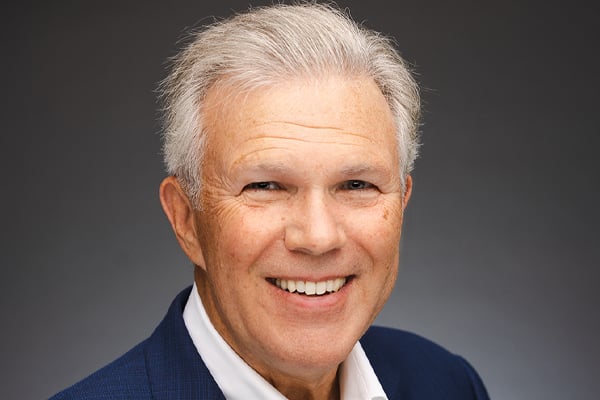Why Good Supervisors are Key in Building a Remote Work Culture That Works
Why Good Supervisors are Key in Building a Remote Work Culture that Works Remote work arrangements are nothing new and prior to 2020 and the COVID-19...
5 min read
 Al Lopus
:
November, 02 2021
Al Lopus
:
November, 02 2021

For many organizations, annual performance reviews are simply “what we do.” Once a year, employees and supervisors sit down to evaluate performance, often using a scaled ranking system that is based on expectations (i.e. whether or not the employee meets/does not meet/exceeds the employer’s expectations).
Annual performance reviews are thought to establish a degree of accountability and provide an opportunity to discuss pay - unfortunately, most performance review systems are full of good intentions but have few benefits. A performance conversations system is a more effective and meaningful approach.
● Traditional performance review systems simply don’t work - they are ineffective, expensive, time-consuming, and unmotivating.
● An effective performance evaluation system must include regular feedback, managerial training, future-oriented goals, and clear action steps.
● Performance conversations, rather than performance reviews, are a more effective and meaningful approach to evaluating employee performance.
● In a performance conversations system, employees and supervisors meet for 30 minutes, five times per year, and focus on goal setting rather than subjective ratings.
● The HR Essentials: Performance Conversation toolkit provides a ready-to-use, customizable performance evaluation strategy designed to enhance and support the impact of each person at your organization.
Research shows that performance reviews are extremely ineffective - and, more often than not, actually cause more harm than good. In fact, it’s estimated traditional performance reviews and approaches to feedback make performance worse about one-third of the time. Even if a manager gives a 5 out of 5 on every criterion, employees are still left unmotivated. A recent Gallup survey found that only 14% of employees strongly agree their performance reviews inspire them to improve.
1. Feedback isn’t regular/consistent
Especially when regular one-on-one's are nonexistent, trying to fit a year's worth of feedback into one meeting is virtually impossible. For feedback to be beneficial and motivating, it must be ongoing.
2. Managers haven’t been trained to provide good feedback
We can’t expect our managers to know how to provide feedback in a beneficial way without proper training. However, managers delivering feedback in a poor or harmful way is just one more reason performance reviews are ineffective. Employees walk in with the expectation that their manager can’t be trusted and is only evaluating them subjectively; thus, the feedback isn’t received.
3. Areas of improvement are left unaddressed for too long
Along the same lines as inconsistent feedback, irregular feedback may result in long stretches of time without an opportunity to discuss necessary behavior changes. Behaviors are more likely to change when the feedback is timely, but when we wait until an annual review to try and address all of the issues at once, the conversation becomes overwhelming and, in a sense, “old news.”
It’s clear - the current system is ineffective, expensive, time-consuming, and unmotivating. So, what can we do differently?
If your current system sounds like what has been outlined above, you may be tempted to toss out your current system and start something new. However, we encourage you to start small. Jumping into a robust, technical system can be complicated and overwhelming, and employee adoption takes time. First, start with something easy to implement and then move to something more sophisticated. Our HR Essentials: Performance Conversation toolkit provides a great starting place.
Unlike a performance review, which is retroactive, a performance conversation is prospective. This means the conversations are future-oriented. Conversations happen while the goals are being worked on, and provide feedback on how things are going and, sometimes, what needs to change.
By holding regular conversations to discuss employee performance (we recommend a quarterly cadence), employees and managers have frequent opportunities to effectively evaluate what’s going wrong and make a plan for how to fix/change the behavior going forward.
Likewise, when we evaluate employee performance within the context of a conversation, we’re able to create a space for feedback. In this case, the employee has the opportunity to give and receive feedback (and vice versa). Through this dialogue, managers are positioned as coaches and can speak more openly with their employees. Plus, these conversations are goal and skill-oriented, which leaves less room for subjectivity when it comes to evaluation.
The program outlined in the HR Essentials: Performance Conversation toolkit provides a foundation for implementing performance conversations by focusing on timely performance feedback conversations that are based on established goals and action items and laying out clear development plans.
● Employees and supervisors meet for 30 minutes, five times per year.
● At the beginning of the fiscal year, employees develop up to four goals with action steps for accomplishment. A measure or metric is established for each one, so the employee is aware of what needs to be accomplished, how it will be evaluated, and the timeline.
● At the end of the year, both parties meet to summarize accomplishments and quantitatively assess overall performance. This meeting also allows for discussion around rewards and pay increases.
Here’s how this might look as a practical application. Susan is the volunteer coordinator at your ministry. A SMART goal is set at the beginning of the year: “To attract and retain 10 new volunteers who will commit to 6 months of service.” Notice how the goal is clear and achievable - if Susan doesn’t attract and retain 10 new volunteers, she has not met the goal. At the end of the year, Susan shouldn’t be surprised that the goal wasn’t met - not only because she has regularly met with you to discuss the goal, but also because it was very clear from the beginning.
● A goal-setting meeting with the team member and supervisor,
● Stretch performance goals, with aligned goals to grow and develop,
● Clear action items for growth and development,
● Quarterly check-ins to support progress and provide feedback,
● Flexibility to change strategies mid-year if things aren’t working.
In short, this approach focuses on clarity, goals, development action plans, and frequent meetings to create a strategy around what is working and what changes might be necessary. Although it is light on end-of-the-year feedback, it is very rich in real-time feedback.
Don’t wait to update your performance evaluation strategy!
Now more than ever, people are looking for development opportunities. We hear it from our ministry partners over and over again - “our people want to grow.” Performance Conversations is a good system for organizations that are responding to employees' desire to receive more feedback and have clear goals for growth and development. It has an emphasis on both career goals and personal growth goals and is constructed to establish action items to attain them all.
It also allows for a qualitative approach, which many Christian-led organizations often desire. If you want to focus on soft skills and values that build the culture - the “HOW” of the work - this approach may be helpful.
As we mentioned earlier, you don’t need an expensive talent management system in order to improve your current strategy. Start small by implementing a system like the one outlined in the HR Essentials: Performance Conversation toolkit. Once you feel comfortable with this system, you can graduate to one that may include more detailed career pathing objectives. Then, you can go beyond “What are your goals?” and help employees craft a path to help them grow in their careers.
As Christian leaders, we cannot continue to sit back and utilize a performance evaluation strategy we know doesn’t work. We owe it to our employees, our managers, and even the people we serve to provide a strategy that inspires, empowers, and motivates employees to do their best work.
Performance and development programs don’t have to be painful for managers and employees. In fact, they can be designed to produce great communication and effectiveness through frequent conversations around goals and growth. Download the HR Essentials: Performance Conversation toolkit for a ready-to-use, customizable approach to enhancing and supporting the impact of each person at your organization.
Download your copy today!

Why Good Supervisors are Key in Building a Remote Work Culture that Works Remote work arrangements are nothing new and prior to 2020 and the COVID-19...

Six Steps for Building Trust with Employees In a recent BCWI survey just over half of the respondents identified building trust with employees as one...

The Challenge Christine Talbot, World Vision U.S.